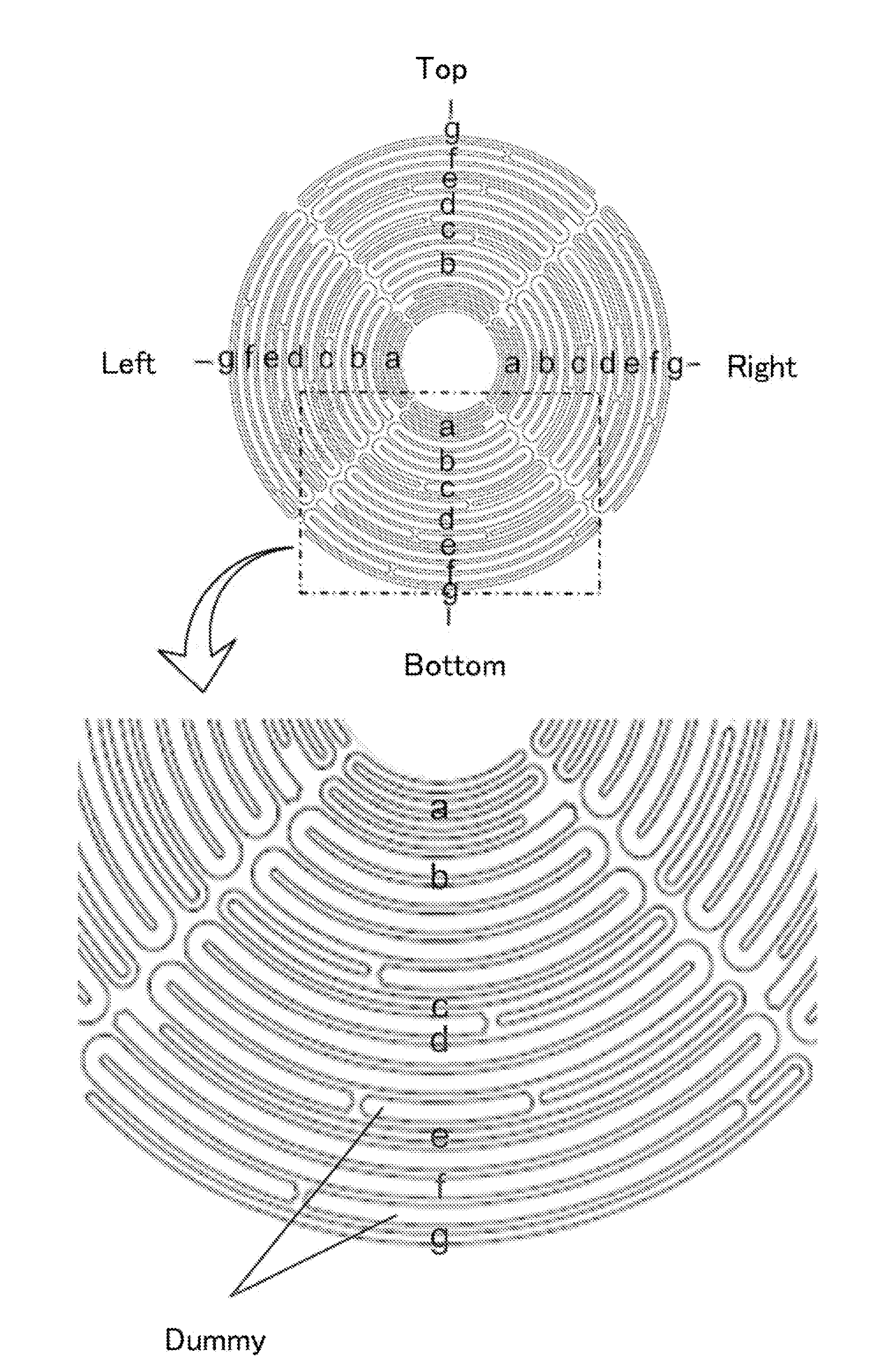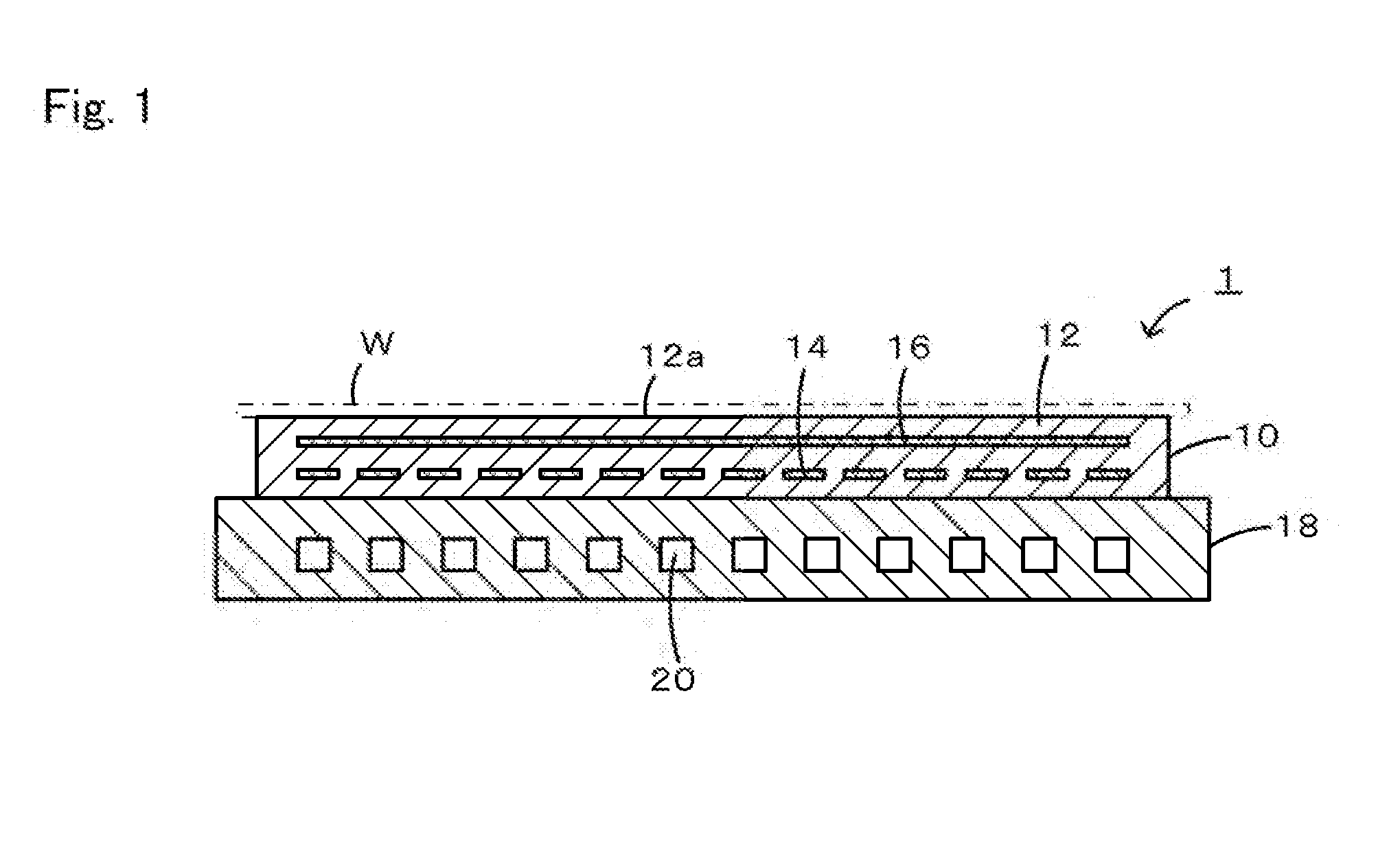Ceramic heater and method for producing the same
a ceramic heater and ceramic technology, applied in the field of ceramic heaters, can solve the problems of reducing the thermal uniformity of the wafer surface during plasma etching, the electric resistance occurred, and the difficulty in controlling the temperature of the ceramic heater, so as to achieve the effect of easy production, easy warpage generation, and easy uniform density
- Summary
- Abstract
- Description
- Claims
- Application Information
AI Technical Summary
Benefits of technology
Problems solved by technology
Method used
Image
Examples
example 1
[0061]An electrostatic chuck 10 was produced by the first production procedure described above (refer to FIG. 2).
(a) Preparation of Molded Bodies
[0062]One hundred parts by weight of an alumina powder (average particle diameter: 0.5 μm, purity: 99.99%), 0.2 parts by weight of magnesia, 0.3 parts by weight of magnesium fluoride, 3 parts by weight of a polycarboxylic acid copolymer serving as a dispersant, and 20 parts by weight of a polybasic acid ester serving as a solvent were weighed. These components were mixed using a ball mill (trommel) for 14 hours to prepare a slurry precursor. A gelling agent containing, namely, 3.3 parts by weight of 4,4′-diphenylmethane diisocyanate serving as an isocyanate, 0.3 parts by weight of ethylene glycol serving as a polyol, and 0.1 parts by weight of 6-dimethylamino-1-hexanol serving as a catalyst was added to the slurry precursor, and the resulting mixture was mixed using a rotary and revolutionary stirrer for 12 minutes to prepare a slurry. The ...
PUM
| Property | Measurement | Unit |
|---|---|---|
| temperature | aaaaa | aaaaa |
| temperature | aaaaa | aaaaa |
| degreasing temperature | aaaaa | aaaaa |
Abstract
Description
Claims
Application Information
 Login to View More
Login to View More - R&D
- Intellectual Property
- Life Sciences
- Materials
- Tech Scout
- Unparalleled Data Quality
- Higher Quality Content
- 60% Fewer Hallucinations
Browse by: Latest US Patents, China's latest patents, Technical Efficacy Thesaurus, Application Domain, Technology Topic, Popular Technical Reports.
© 2025 PatSnap. All rights reserved.Legal|Privacy policy|Modern Slavery Act Transparency Statement|Sitemap|About US| Contact US: help@patsnap.com



